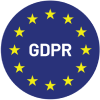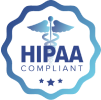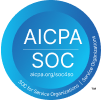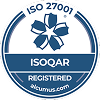Quick Summary
- Many K-12 schools are now facing budget shortfalls.
- K-12 survey platforms help identify student and parent needs but can be expensive.
- Sogolytics offers the features schools need at a price they can afford.
U.S. schools now face a dual challenge: Budget shortfalls compounded by potential funding cuts.
As a result, K-12 administrators are searching for ways to stretch spending without negatively impacting the student experience. Consider survey tools. These platforms are critical for schools to collect feedback and drive timely decision-making.
Solutions with the feature sets and compliance assurances that administrators need, however, often exceed budget allocations. In this piece, we’ll break down the basics of K-12 survey software pricing, offer a comparison of popular platforms, and provide a clear value framework for schools to help leaders find their best-fit solution.
What Really Drives K-12 Survey Platform Pricing?
Several factors drive K-12 survey platform pricing, such as:
- User counts
- Survey volumes
- Advanced feature sets
- Data security
In addition, survey providers typically offer multiple pricing models, including:
- Subscription
- Pay-per-response
- Enterprise
Typical Platform Pricing
K-12 survey platforms can be split into three broad types: Free/basic tools, mid-tier solutions, and enterprise technologies.
Free or basic tools include options like Google Forms or limited-scope solutions such as Sogolytics’ Plus plan. Schools can expect to pay anywhere from $0 – $25 per month for these tools.
Next up are mid-tier tools such as SurveyMonkey’s Premier plan and plans from tools like Alchemer. Here, schools typically pay between $30 and $99 each month.
Enterprise plans round out the list. Companies such as Qualtrics offer robust platforms that include powerful analytics and full integration with other education apps. Pricing on these plans is by request — schools contact the company, and plans are tailored to their needs. As a general rule, however, these plans are costly. For example, Qualtrics may run anywhere between $30,000 and $60,000 per year, depending on the use case.
Sogolytics offers a similar K-12 survey platform for approximately half the price.
Features That Justify the Price
With budgets tightening, schools need features that justify the price tag of enterprise solutions. These features fall into two broad categories: Essential and Advanced.
Essential
Essential features include prebuilt survey templates, results reporting tools, and compliance with accessibility standards, such as Section 504 of the Rehabilitation Act of 1973.
Advanced
Advanced features include multilingual surveys, customizable dashboards, and seamless integration with learning management systems (LMS) and student information systems (SIS).
Why Districts Are Willing to Pay More
Survey platforms serve both individual schools and larger districts. As a result, school boards are often willing to pay more for features such as simplified large-scale distribution, enhanced data privacy, and ongoing support.
It’s also worth noting that in most cases, strong security tools and robust customization options typically outweigh upfront cost. Consider two school districts. One spends $1,000 per year on a mid-tier K-12 survey platform, and the other invests $30,000 per year in an enterprise plan.
Upfront, the first school comes out ahead by $29,000. Over time, however, the balance shifts. The first district discovers that their new tool doesn’t work with their current LMS, so they need to hire a development company to bridge the gap. They also find that implementing the solution at scale leads to performance problems as the number of concurrent users exceeds the tool’s capacity. Within a few years, both school districts have spent the same amount, but the enterprise-grade solution resulted in fewer headaches and easier implementation.
Cost vs. Value: Comparing Leading Survey Platforms
Both cost and value play a role in selecting the right survey platform. Cost is what schools pay upfront and over time. Value goes beyond spending to include time saved, mistakes avoided, and processes streamlined.
For example, while the cost of Google Forms is negligible, the solution only offers basic surveys. This means teachers and administrators must convert raw data into usable insight. Tools such as Sogolytics, meanwhile, offer advanced reporting features along with customizable privacy settings. In addition, Sogolytics is compliant with the Family Educational Rights and Privacy Act (FERPA).
| Platform | Typical Pricing (Schools/Districts) | Features & Limitations | Best For |
|---|---|---|---|
| Google Forms | Free | Basic surveys No advanced reporting or compliance | Small schools with minimal needs |
| SurveyMonkey | $30-$92/month (per user) (team plans) | Easy to use Limited enterprise features | Small/medium schools |
| Qualtrics | $30,000-$60,000 per year (enterprise) | Best-in-class analytics Per-per-response | Large districts, research-heavy universities |
| Sogotytics | ~50% less than Qualtrics for enterprise | Advanced reporting FERPA/GDPR compliance Unlimited responses | Medium and large districts needing robust and affordable solutions |
Ultimately, schools need to prioritize return on investment (ROI) over upfront cost. More expensive tools that offer better insights, improved engagement, and enhanced compliance typically outpace cheaper solutions over time.
How Schools Can Maximize Value
For schools that choose enterprise-level solutions, there are several ways to help maximize value, including:
Negotiate for discounts
Unlike low-cost or mid-tier plans, enterprise plans are customized to meet client needs. This provides the opportunity for negotiation, especially for larger districts.
Ask vendors about hidden costs
It’s also a good idea to ask vendors about hidden costs such as user training, ongoing support, or feature add-ons.
Run a pilot trial first
Before committing to a long-term agreement, run a pilot trial. If a potential provider doesn’t offer demos or trial plans, consider a different vendor.
Consider long-term ROI
Remember that the long-term value of better decision-making, reduced manual effort, and compliance peace of mind typically outweighs upfront costs.
Making the Most of K-12 Survey Solutions
Education survey software pricing varies widely depending on features, compliance requirements, and the scale of the project. While free and low-cost tools may suit individual schools, districts often require enterprise-grade platforms that offer enhanced security, more comprehensive support, and platform customization options.
The result? To make the most of K-12 survey solutions, schools need to think past the price tag. Enterprise-grade tools come with higher upfront costs, but offer the long-term benefits of better insights, enhanced privacy, and smoother decision-making.
Ready for a K-12 survey upgrade? See how Sogolytics stands out by balancing affordability with advanced capabilities. Request a demo today.
FAQs
1) How much does education survey software cost for schools?
The cost of K-12 survey software depends on the type. Basic tools such as Google Forms are free. Mid-tier solutions may cost up to $100 per year, while enterprise tools can reach $30,000 or more.
2) Is Qualtrics worth the higher price for districts?
Yes and no. While the solution offers advanced reporting and full integrations, it’s often twice the cost of platforms such as Sogolytics, which provides similar features along with full FERPA and GDPR compliance.
3) Why is Sogolytics a cost-effective alternative to premium tools?
Sogolytics is a cost-effective alternative because schools and districts get the best of both worlds: Budget-friendly pricing that doesn’t skimp on functions or features.
4) Do schools get discounts on enterprise survey software?
Enterprise plan pricing is typically by request, since these plans are customized to the client. As a result, there’s often room for negotiation and the opportunity for schools to save money.














